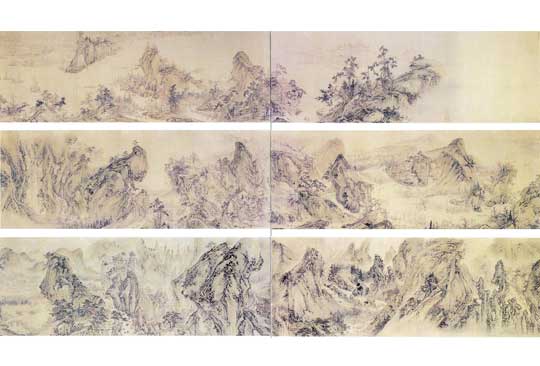Ri In Mun, a representative Korean artist, and his remains
Ri In Mun is a representative realistic landscape painter of Korea dating from 18th century to early 19th century.
He was very close with Kim Hong Do, a realistic painter, and Pak Je Ga, a realist scholar. Under their influence, he got rid of the imitative creating style and created realistic landscape paintings, thus got so famous as to be one of the twin masters at the contemporary art circle together with Kim Hong Do.
Ri In Mun mainly painted a great deal of portraits and flowers and birds as well as landscape.
“Mountains and Rivers without End”, “Thick foliage”, “Ferryman”, and “Fishing Port” are his representative paintings that still remains.
“Ferryman” reflects a slice of the life of Korean ferrymen.
In the picture, a ferryman, pillowing on an oar, is sleeping in a moonlit evening with one hand on his forehead and his belly exposed. His small boat is moored on a reedy riverbank. Through the description of the ferryman, the inner sphere of simple and diligent working people is well presented.
He became more famous for his painting “Mountains and Rivers without End”.
It is a landscape painting that shows the respective natural sceneries of spring, summer, autumn and winter following a long river from a deep valley to a sea.
In the painting, steep mountain peaks, strange rocks, streams, trails, scattered villages, heavily laden cargo boats and fisher boats are depicted vividly. And also many people are described including those riding on donkeys, those sheltering from the heat under a tree, those angling for fish and carrying heavy loads from the ships anchored in the port.
The painting organically connected the nature and the human life of that time, comprehensively reflected the socio-economic situation and created high level of artistic description. Thus it is widely known as one of three masterpieces of the landscape painting of the feudal Joson dynasty.
